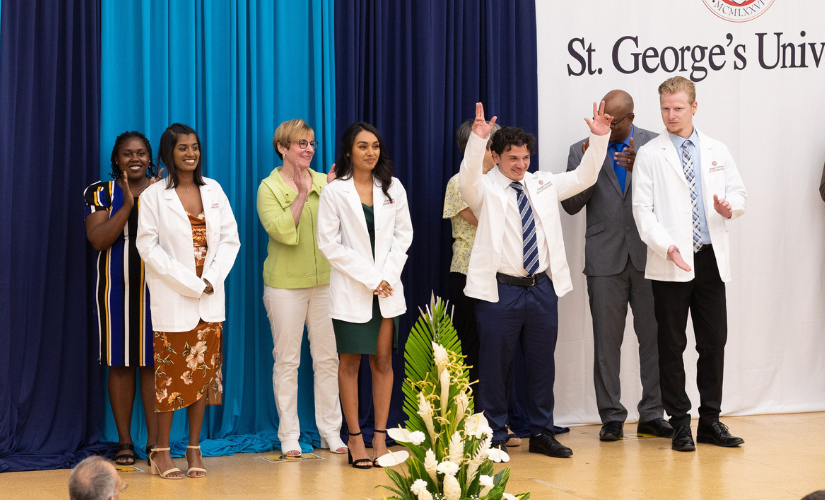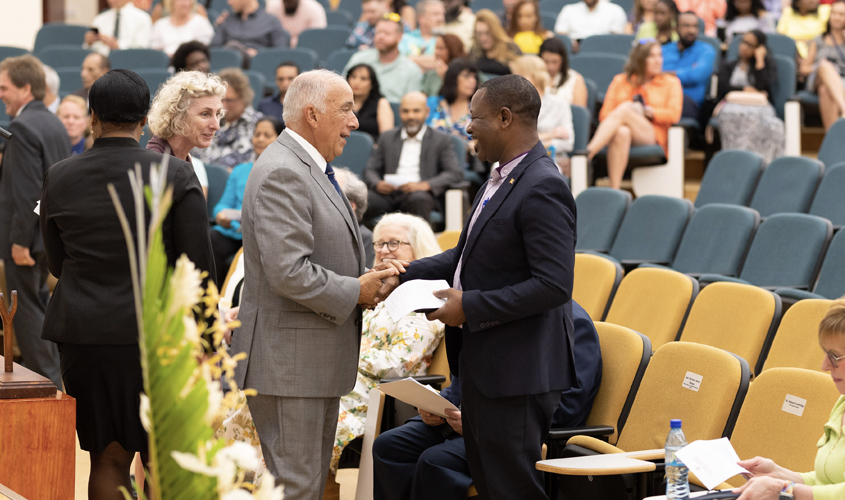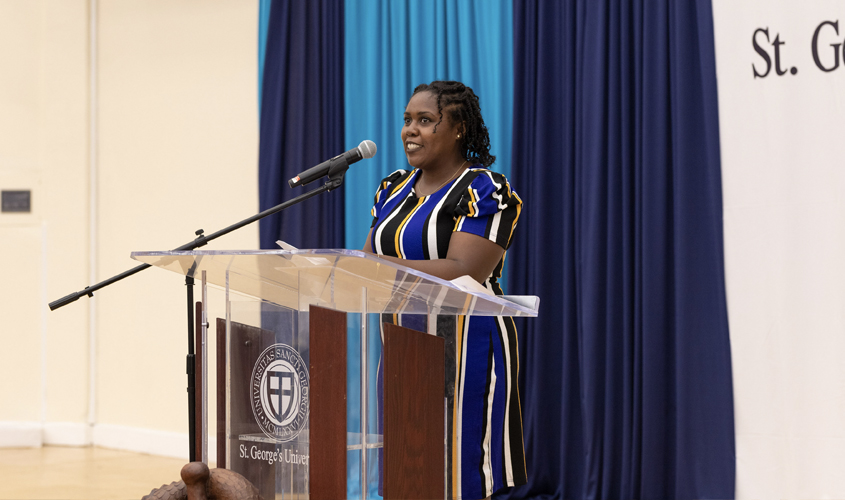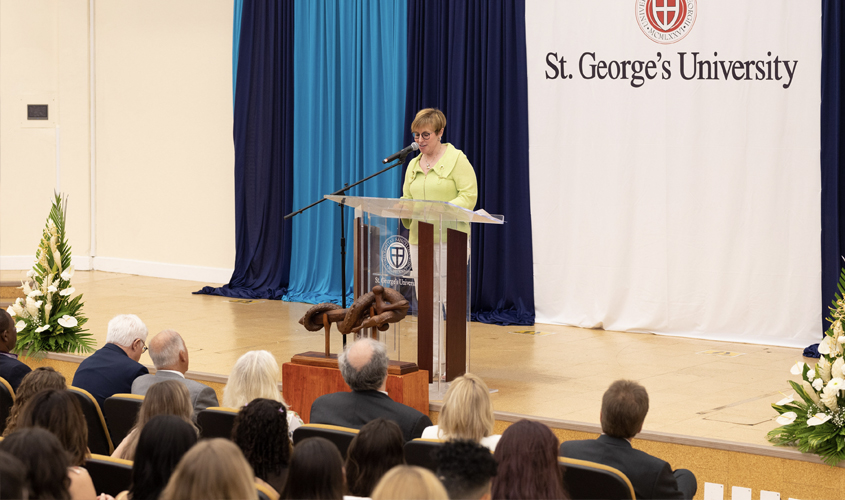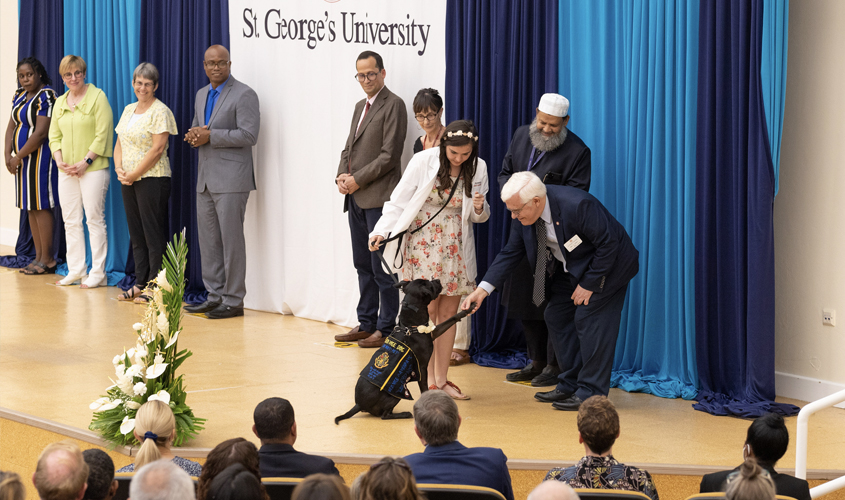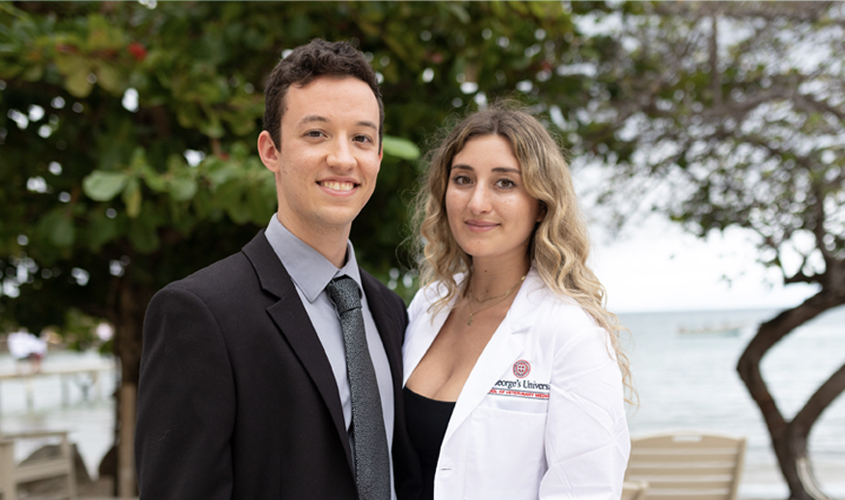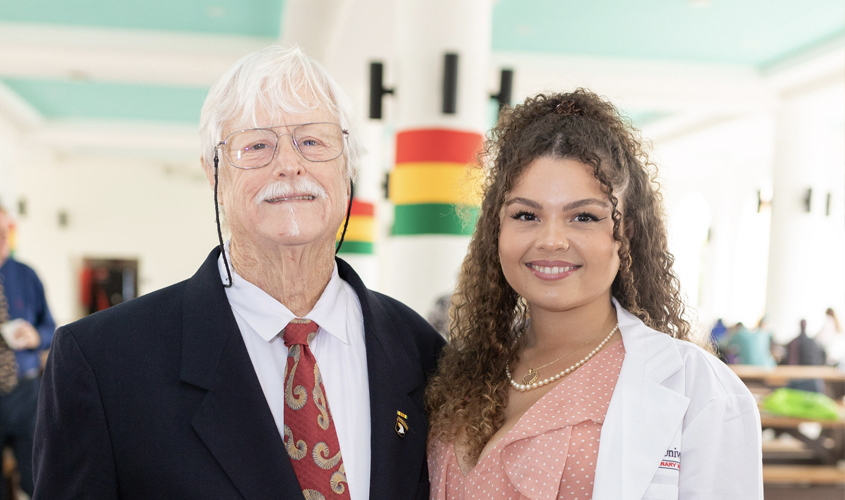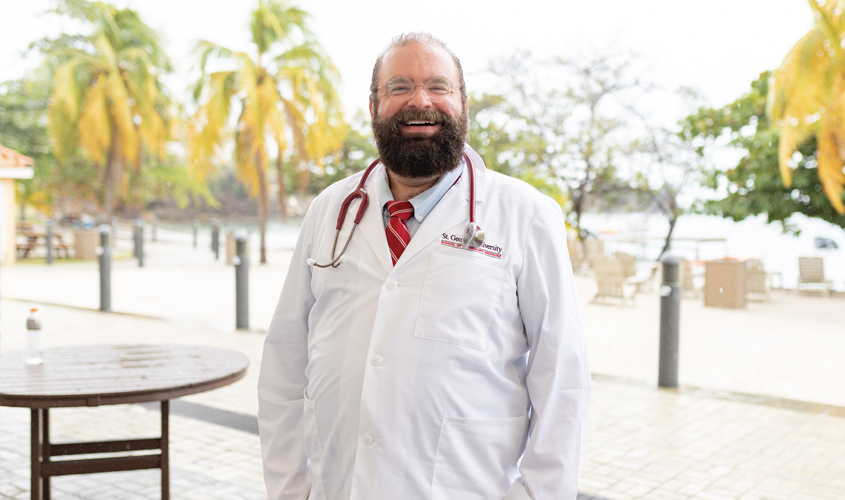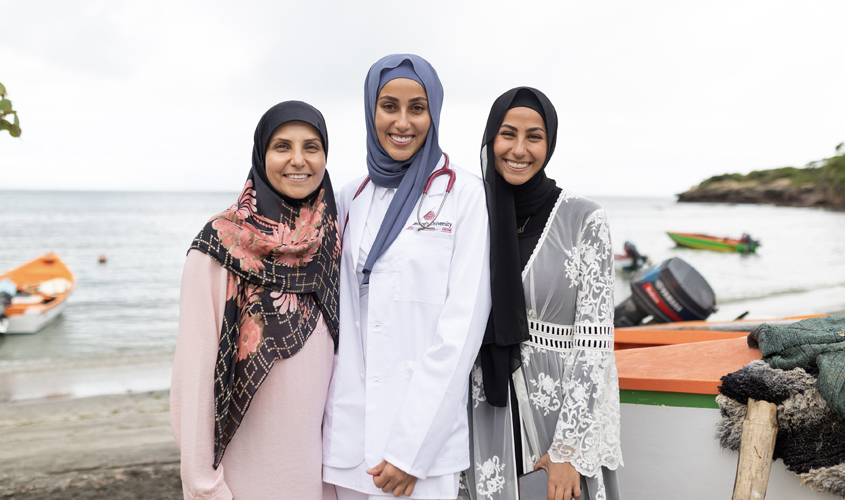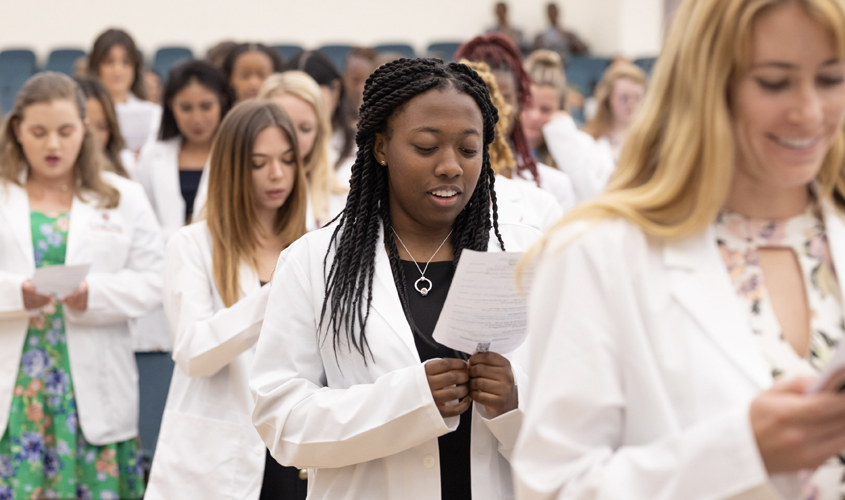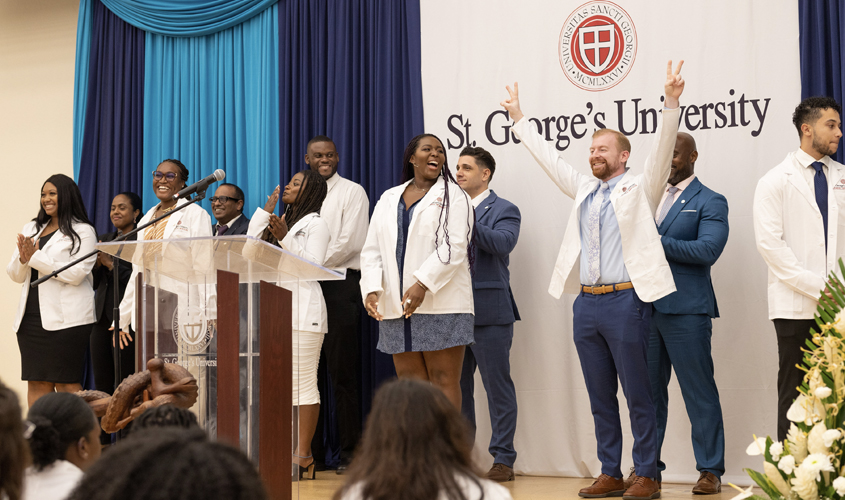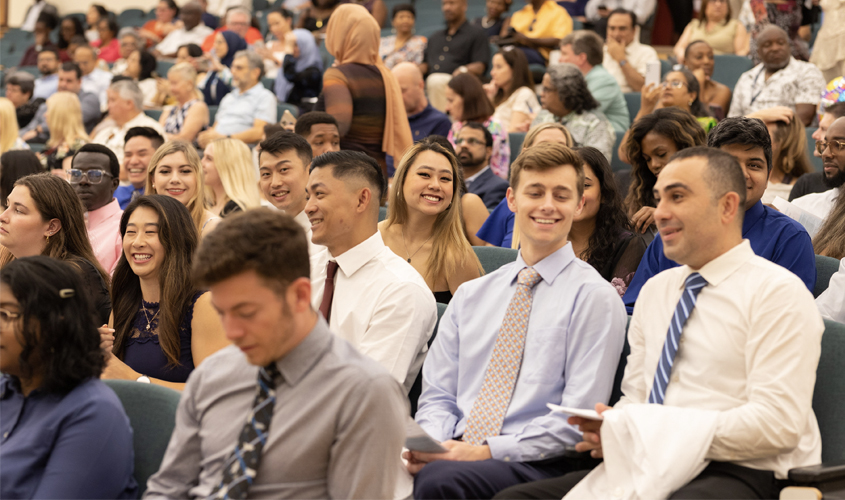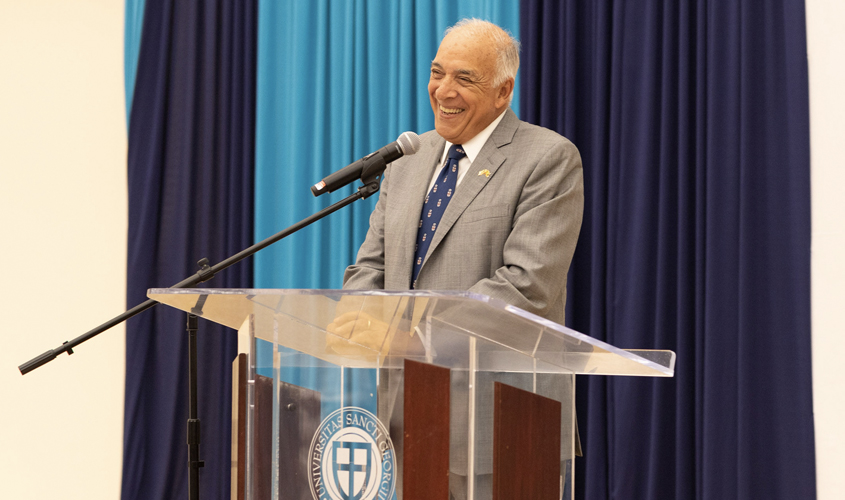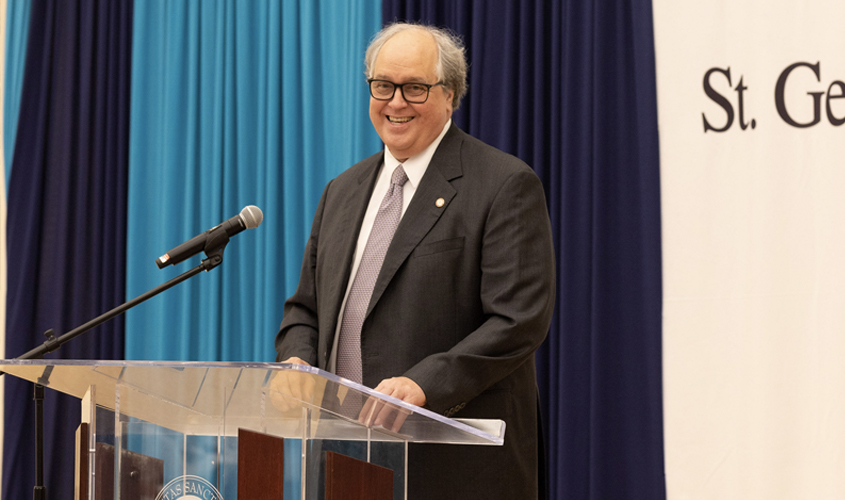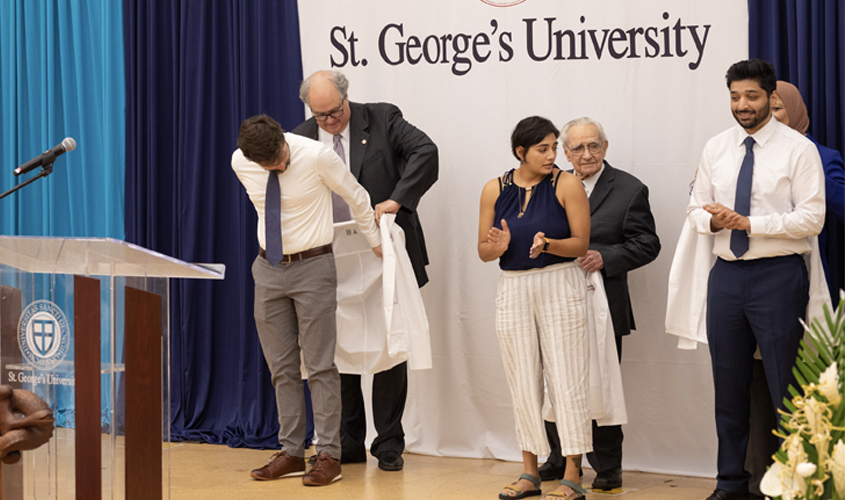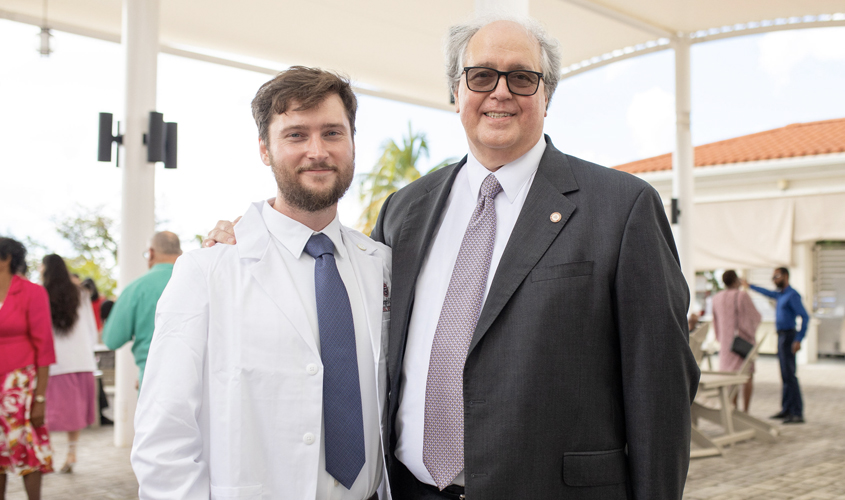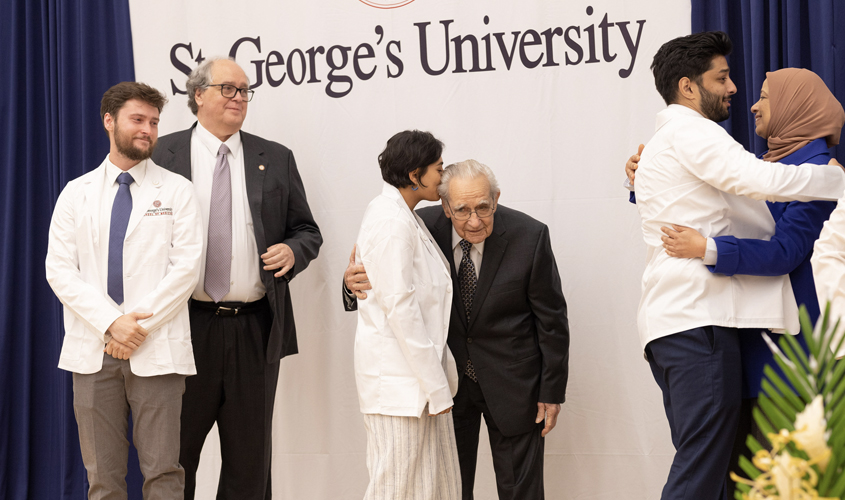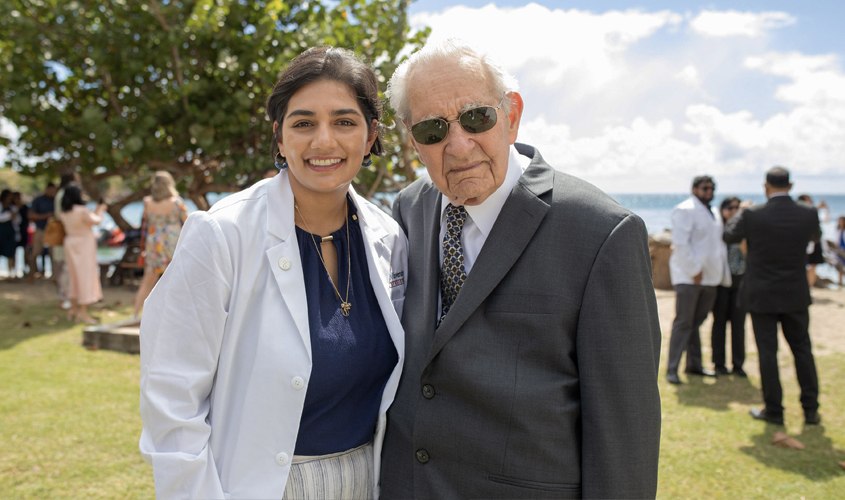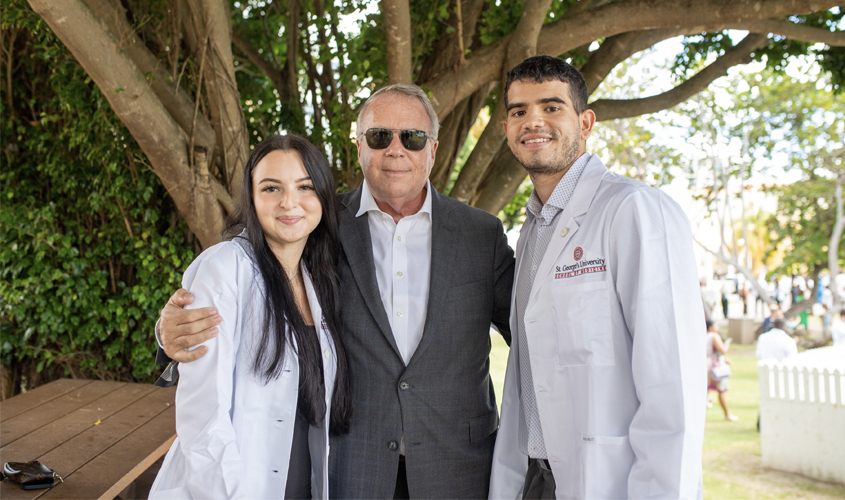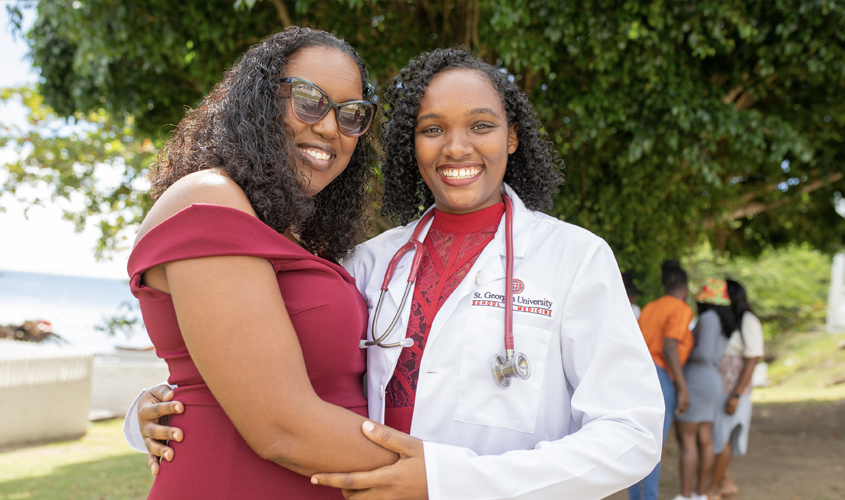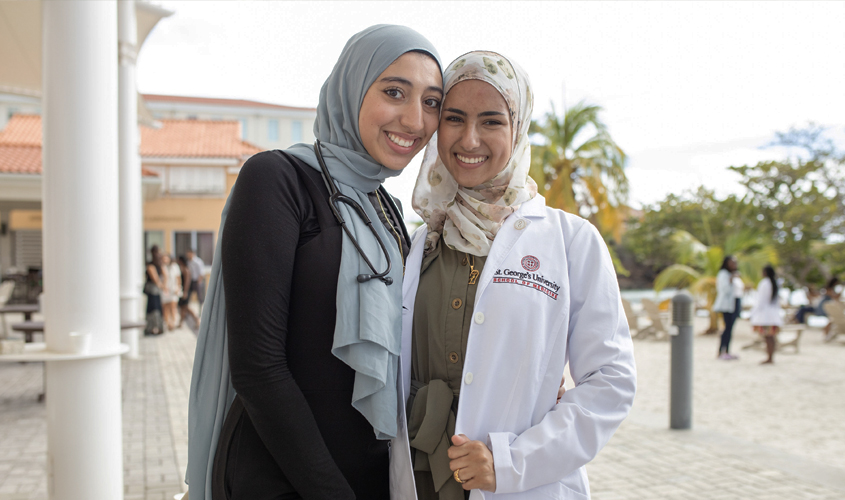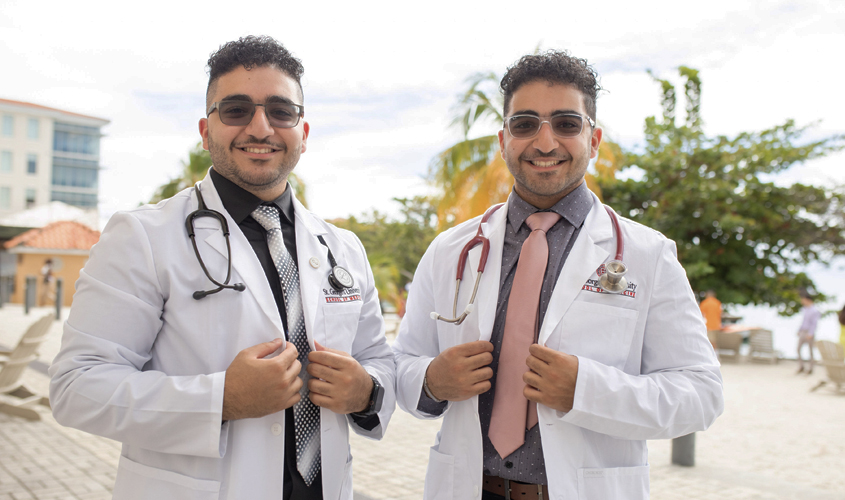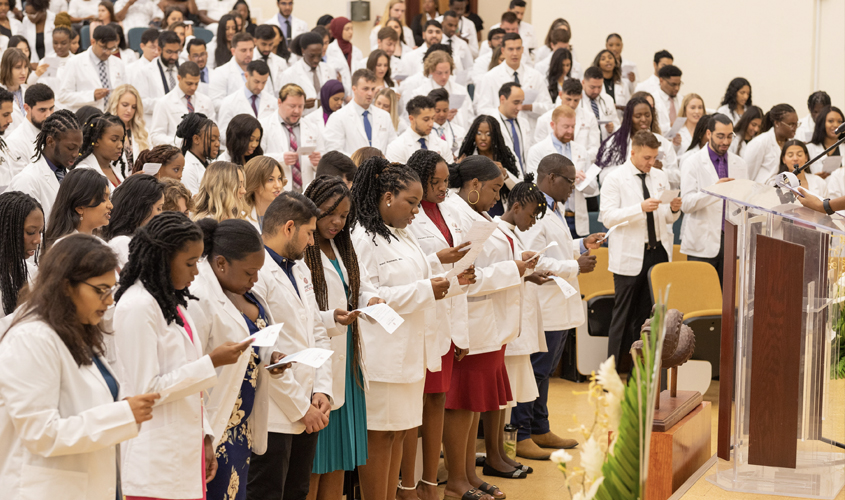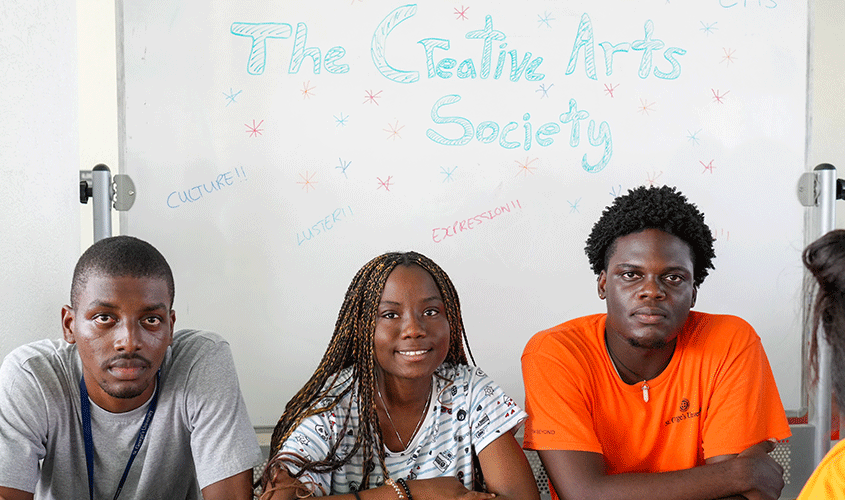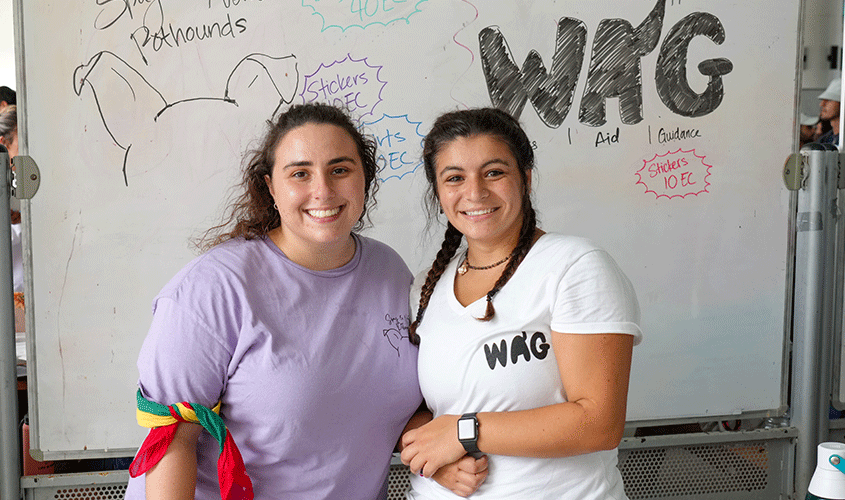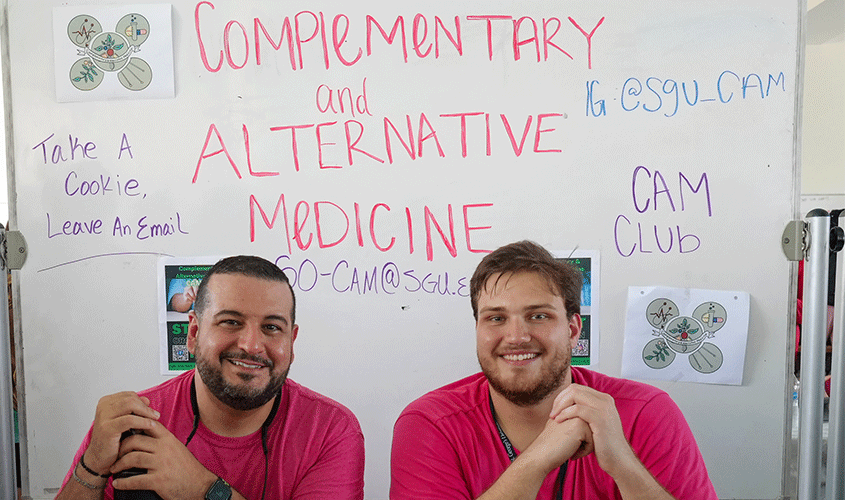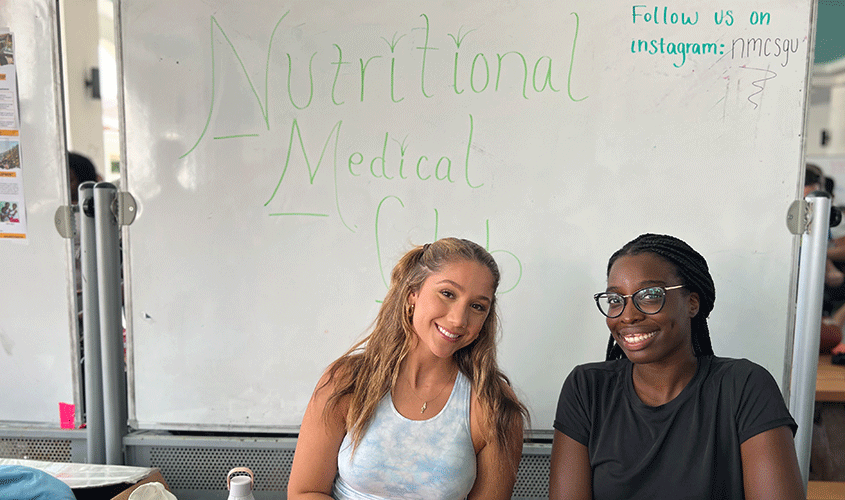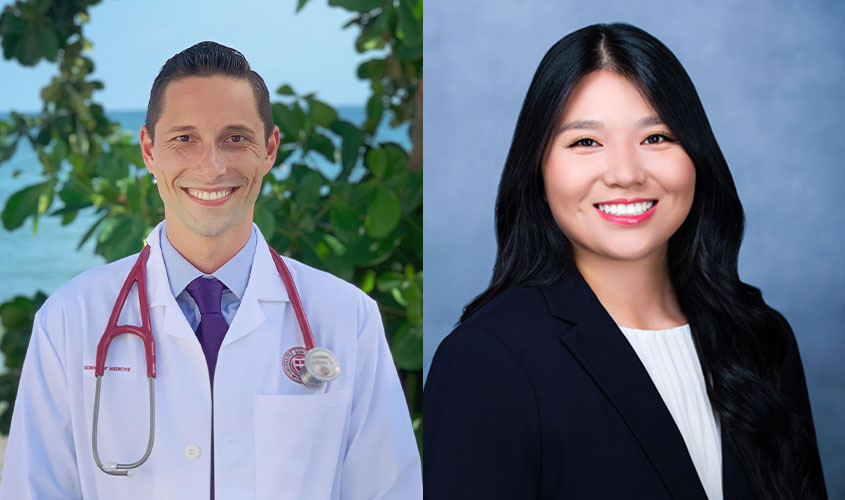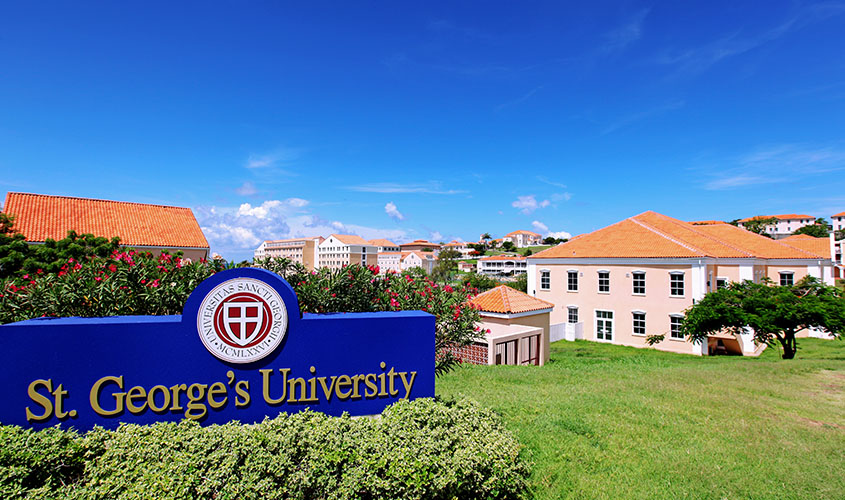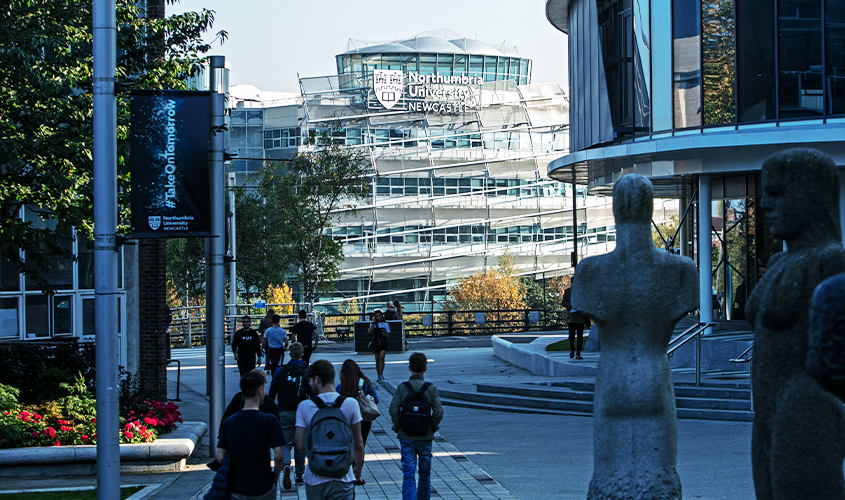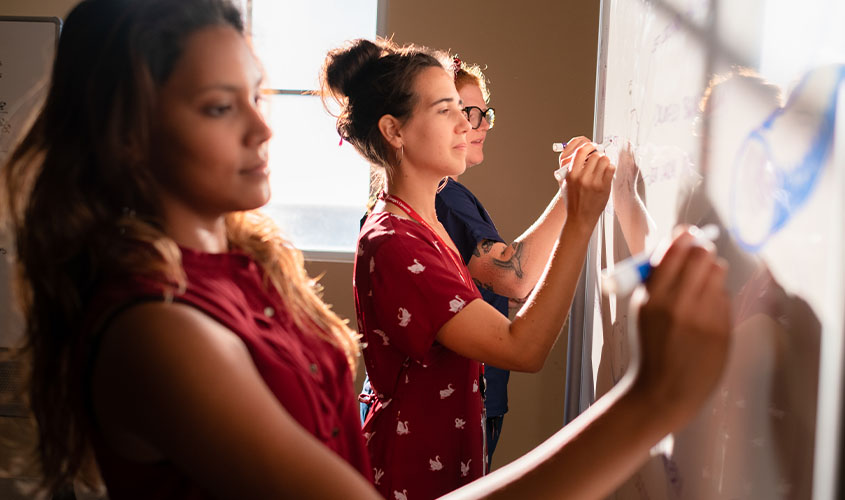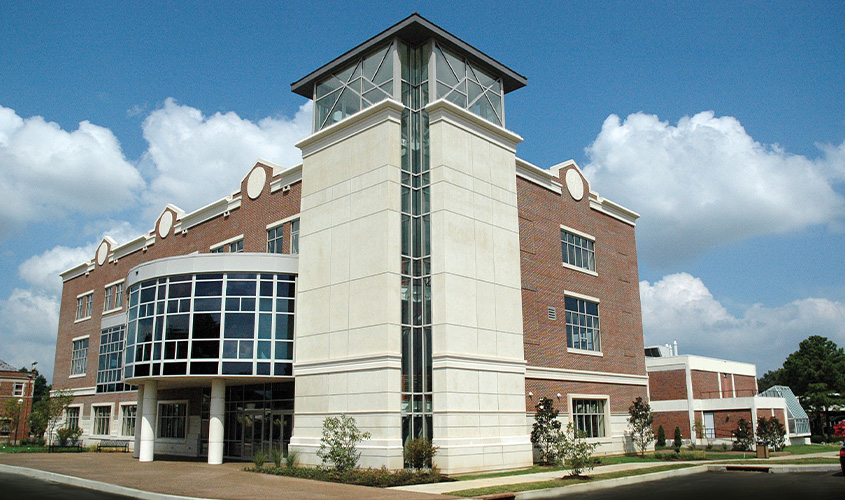Pursuing a Dual Degree in Veterinary Medicine: Grads Share Their Experiences
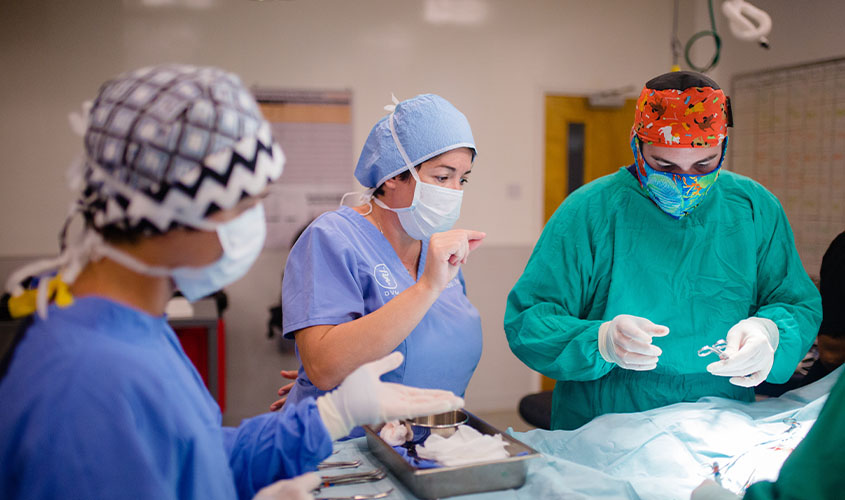
Dr. Adria Rodriguez, an associate professor of small animal medicine and surgery, and professional development in SGU’s School of Veterinary Medicine, received her dual DVM and MSc from the University.
Many students at St. George’s University School of Veterinary Medicine take part in unique educational opportunities that can transform their careers. One SGU course of study is a veterinary dual-degree program, where students can combine earning a Doctor of Veterinary Medicine degree with one of several master’s degrees, including: a Master of Public Health (MPH), Master of Science (MSc), or Master of Business Administration (MBA).
Whether it’s exploring the intersection of animal health and the human world, focusing on fundamental and applied research, or improving their business skills, each of these programs provides in-depth learning opportunities for aspiring veterinarians, according to Dr. David Marancik, associate dean of graduate studies for SVM.
“SGU’s graduate programs of study are diverse and can match the student’s career goals—allowing them to gain advanced knowledge and expertise within their field of choice,” Dr. Marancik said.
SGU News spoke to several dual degree veterinary alumni to find out how their degrees from the University have enhanced their career prospects and the advice they offer to students considering this educational route.
Why Pursue a Dual Degree
Sydney Friedman, DVM ’21/MPH ’21, an associate veterinarian at Hoboken Vets Animal Clinic in Hoboken, NJ, had always known she wanted to work with animals as a child. She initially pursued her DVM degree so that she could educate others and herself about disease transmission from zoonosis and preventative methods.
She then learned about the opportunity to obtain an MPH degree.
“By obtaining my MPH, I have gained additional knowledge of these diseases affecting humans, animals, and the environment, which has allowed me to expand my veterinary career in ways I didn’t think were possible,” Dr. Friedman said.
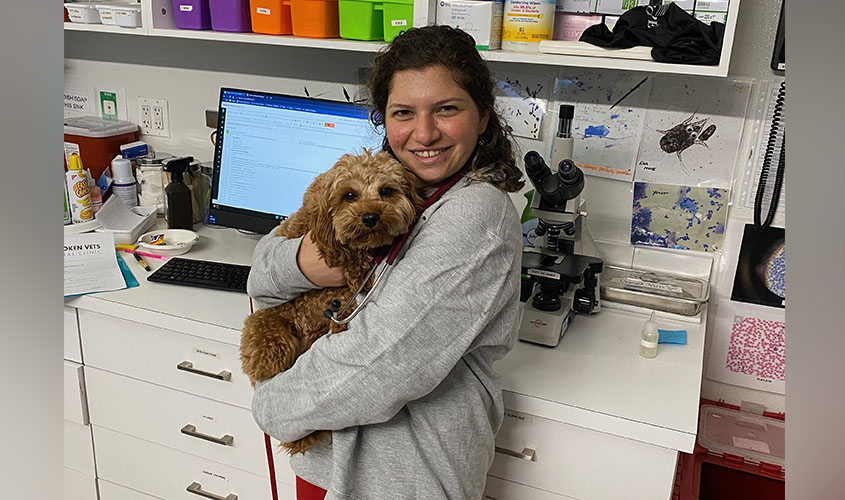
Sydney Friedman, DVM ’21/MPH ’21, an associate veterinarian at Hoboken Vets Animal Clinic in Hoboken, NJ, says her dual degree allows her to educating my clients on vaccines, disease processes, disease control, as well as disease spread.
In her current role, Dr. Friedman said she educates her clientele about the importance of preventative medicine.
“I am continuously educating my clients on vaccines, disease processes, disease control, as well as disease spread,” she said. “I am also accredited by the [U.S. Department of Agriculture] to write health certificates for international travel, allowing for additional conversations surrounding regional diseases. Having both a DVM and an MPH gives me the knowledge needed for these conversations.”
Heather Douglas, DVM ’06/MBA ’11, owner of Douglas Animal Hospital in Osseo, MN, said she decided to pursue her MBA degree several years after earning her license so that she could make the most appropriate financial decisions for her practice. Douglas Animal Hospital treats a wide variety of animals from cats and dogs to geckos, snakes, potbellied pigs, and hamsters. She is also heavily involved in community services—both in the states as well as Grenada. Dr. Douglas founded the non-profit veterinary service, GrenVet, which provides free care to animals in Grenada.
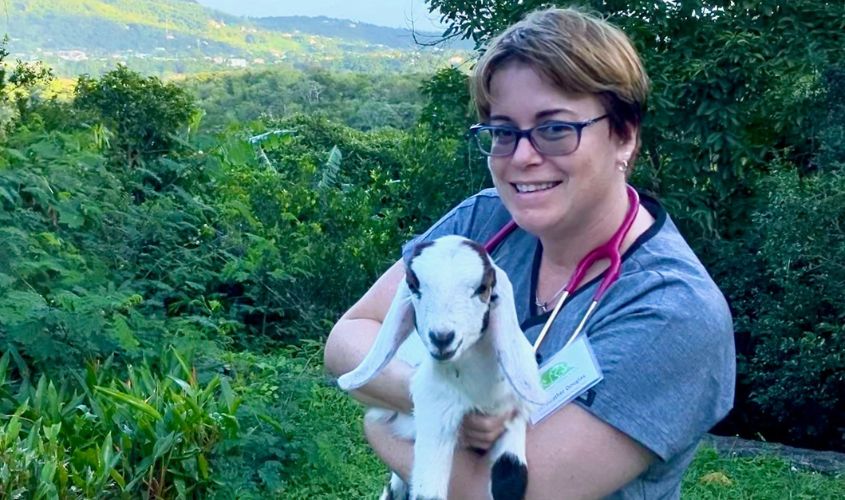
Heather Douglas, DVM ’06/MBA ’11, owner of Douglas Animal Hospital in Osseo, MN, said she decided to pursue her MBA degree several years after earning her license so that she could make the most appropriate financial decisions for her practice.
“I was very interested in learning more about business and how that would benefit my practice in the long run,” Dr. Douglas said. “My degree in animal science was a step to becoming a veterinarian, but the MBA was chosen to ensure my practice was successful long-term. A dual degree gives additional ways to expand your knowledge and perspective, which can promote your career.”
A Unique Advantage
Earning a dual degree can give veterinarians a leg up over peers, especially when applying for specialized career positions.
“Soon after I got my MBA, I was hired as a medical director for a 24/7 emergency and general practice veterinary hospital that had 12 doctors and over 30 support staff. I would never have been considered in the running for the medical director position if I didn’t have my MBA,” according to Jennifer Lopez, DVM ’11/MBA ’13.
“The MBA at SGU really helped me understand the financial and marketing management side of the business and how to think strategically,” she added. “For instance: how to afford that laparoscopy equipment that one doctor wanted; how to optimize the surgery schedule; or how can we best utilize our technicians, front desk staff, etc.”
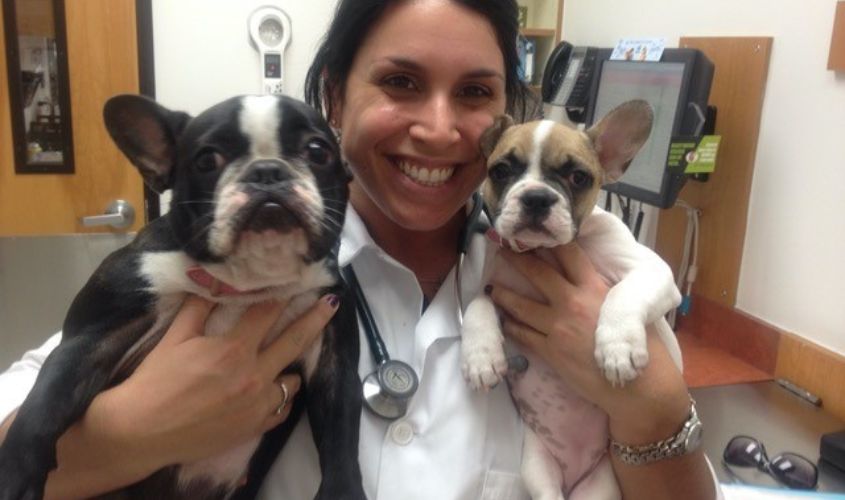
Jennifer Lopez, DVM ’11/MBA ’13, a professional services veterinarian for Antech Diagnostics and Imaging, says her MBA continues to prove useful. She is also a certified compassion fatigue and clinical trauma professional.
Dr. Lopez has since moved on from her position as medical director and today serves as a professional services veterinarian for Antech Diagnostics and Imaging, where her MBA continues to prove useful.
At her job, Dr. Lopez focuses on helping business owners optimize the medical and business aspects of veterinary medicine. She is also a certified compassion fatigue and clinical trauma professional, helping trained veterinarians avoid or prevent compassion fatigue when treating patients.
“What I love most about veterinary medicine is that there are so many opportunities to not just be proponents of animals and their health, but the diversity in how to use our degree,” Dr. Lopez said. “You can be a part of the food industry, policymaking, or an entrepreneur owning a practice or several practices. Adding a second degree will help you to further your career in ways you may not have considered at first.”
“My dual degree was the start of the path that my professional career has taken, and I could not be happier.”
Joseph R. Frame, DVM ’21/MSc ’20 in Wildlife Conservation Medicine, agreed. Dr. Frame, a small animal emergency/critical care service veterinary specialty intern at the University of Illinois Veterinary Teaching Hospital, is currently in advanced training to become a board-certified specialist in emergency and critical care and, like Dr. Lopez, recognizes the positive impact his dual degree has on his career prospects. Eventually, he hopes to be able to teach and train the next generation of veterinarians.
He is passionate about zoo companion species, such as chinchillas, bearded dragons, and birds—all animals that come into the emergency room he works in.
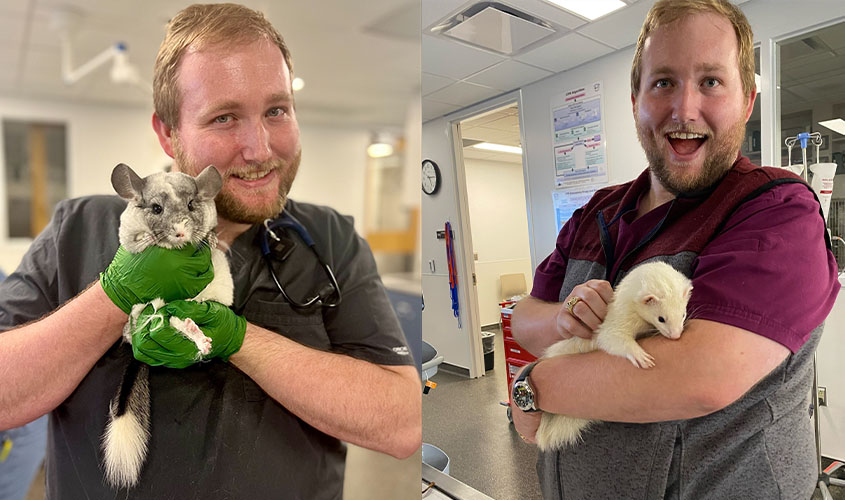
Joseph R. Frame, DVM ’21/MSc ’20 in Wildlife Conservation Medicine is a small animal emergency/critical care service veterinary specialty intern at the University of Illinois Veterinary Teaching Hospital. He is currently in advanced training to become a board-certified specialist in emergency and critical care.
“My master’s degree gives me a unique advantage over other veterinarians because it allowed me to really hone my critical thinking skills,” said Dr. Frame. “I love veterinary medicine because it is very much like solving a puzzle and many times it takes a lot of critical thinking skills. I’m very glad that I pursued a master’s degree because I think I’m a better doctor for it.”
A Word of Advice
Earning a dual degree may not be easy; the curriculums are rigorous and challenging, and students need to be committed if they choose to go this route.
“When considering a dual degree, be clear on your why, and make sure that it aligns with where you see yourself professionally,” according to Adria Rodriguez, DVM ’08/MSc ’10, MS TCVM, ACC, an associate professor of small animal medicine and surgery, and professional development in SGU’s School of Veterinary Medicine. “Do it because you want to do it, and be realistic with your time management skills and finances.”
For instance, will students be able to allot the time necessary to pursue both degrees and take care of your well-being while pursuing them?
“The dual degree curriculum is rigorous, and self-care is of utmost importance on your path to success,” Dr. Rodriguez emphasized.
Dr. Rodriguez, who supervises Term 5 SVM students in the Junior Surgery and Anesthesia Laboratory, said obtaining her MSc expanded her knowledge in research methods, statistics, and other fields, greatly helping her in her role as an educator, clinician, and researcher.
“My dual degree was the start of the path that my professional career has taken, and I could not be happier,” she said.
Echoed Dr. Frame: “It is a long road, and there will be some bumps along the way. If a dual degree is something you really want to do, pick yourself up and keep going. I missed several family events while in veterinary training, but it was all worth it after working with a real patient for the first time.”
– Ronke Idowu Reeves and Laurie Chartorynsky
